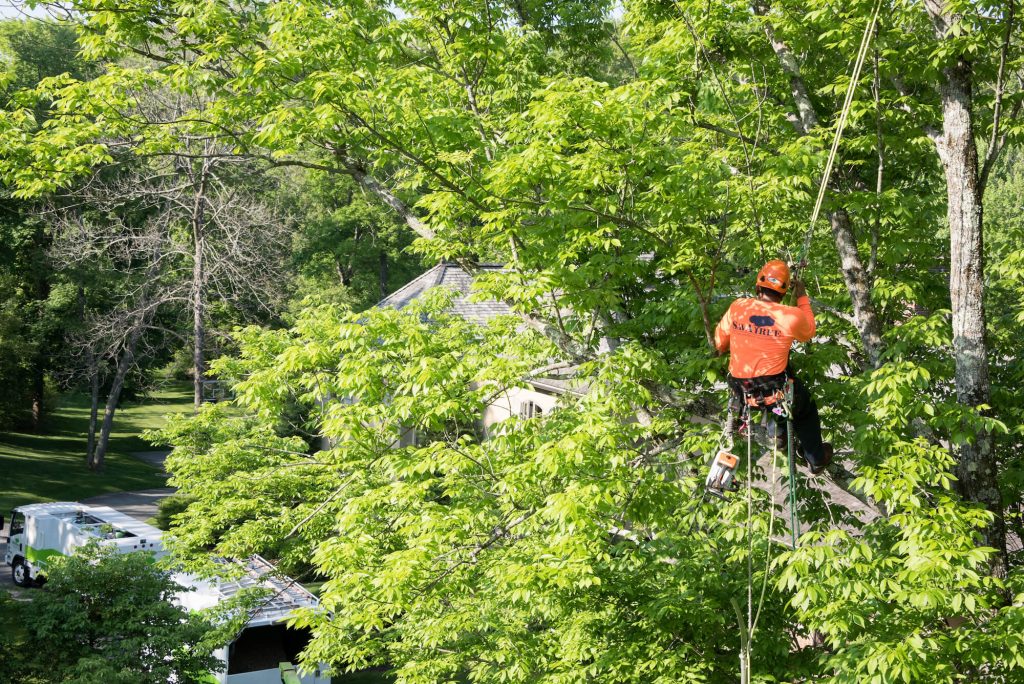Rape myrtles provide colour and elegance to any garden with its flowing branches and vibrant blooms. You undoubtedly wish to ensure the flourishing of these lovely floral bushes, as you are their joyful owner. In this comprehensive guide, we’ll cover every aspect of care for crape myrtles, providing insightful information and practical tips to keep your landscape exploding with color throughout the growing season.
How to Care for Crape Myrtle?
Allow us to show you these incredible plants for a little while before we go into maintenance guidelines. Crape myrtles, or Lagerstroemia as they are technically called, are tiny trees or deciduous shrubs of the loosestrife family. They came from Southeast Asia and are now a beloved feature in gardens all around the world.
Setting Up Crape Myrtle
Right planting is the cornerstone of a robust crape myrtle. First, pick a location with adequate drainage and lots of sunlight.
These plants want full sun, so pick a spot that gets at least six hours of sunlight each day. After planting, make sure the root ball is level with the soil, and water the plants often to promote root establishment.
Fertilization for Crape Myrtles
Soils neutral to slightly acidic are preferred for Crape Myrtles. After measuring the soil’s pH, apply the required amendments. The fertility and structure of soil are enhanced by compost and other organic debris.
In terms of fertilization, a springtime application of a balanced, slow-release fertilizer promotes robust growth and copious flowering.
Pruning for Crape Myrtles With Caution
Make careful to create a consistent watering schedule for your crape myrtles. They can tolerate some dryness once established, but regular watering is necessary, particularly in dry seasons.
Allow the soil to somewhat dry out in between thorough waterings. Mulching the ground around the base helps retain moisture and discourage weed growth.
Pruning Crape Myrtles Methodologies
When to Trim Crape Myrtles
Pruning is a crucial component of crape myrtle maintenance. Start your pruning in late winter or early spring, before new growth starts. This encourages the growth of robust branches and a uniform canopy.
Stem-cutting in late summer should be avoided since it can promote late-season growth that is vulnerable to frost damage.
Appropriate Pruning Methods for Crape Myrtles
Concentrate on pruning any weak or crossed branches to promote a canopy with enough ventilation. Deadheading wasted flowers also encourages the continuous development of fresh blooms. The goal is to maintain a light-filled, open structure that lets sunlight filter through the foliage.
Pest and Illness Control for Crape Myrtles
Watchfulness Against Common Problems
Crape myrtles are tough creatures, although they sometimes have difficulties. Keep a look out for typical problems like scale insects, aphids, and powdery mildew.
Examine the leaves frequently, and if you see any indications of an infestation, treat it right away with neem oil or insecticidal soap. Regular pruning helps reduce the chance of disease spread.
Winter Maintenance
Even though crape myrtles lose their leaves in the winter, don’t let that deceive you into not caring for them. Cover the base with a layer of mulch to shield the roots from bitter cold. For more insulation in colder climates, think about wrapping the trunk in hessian.
Radiant Magnificence for Crape Myrtles
Promoting Prosperous Blooms
Crape myrtles are particularly enticing because of their magnificent blossoms. A beautiful show can be guaranteed with plenty of sunshine, appropriate fertilization, and timely pruning. Larger, more visually striking flower clusters can be encouraged to grow by carefully cutting lateral branches in the late winter.
Different Types for Each Garden
There are numerous cultivars of crape myrtles, and each has a special charm of its own. There is a crape myrtle that is ideal, ranging from the little ‘Pocomoke’ to the stately ‘Natchez.’
Investigate many options to give your outdoor area a varied tapestry of hues and sizes.
FAQs
How often should my crape myrtle be watered?
Water your crape myrtle thoroughly, making sure to use enough water to maintain a constantly moist soil, especially in the drier months. To avoid waterlogging, make sure the soil has adequate drainage, though.
What is the ideal time of year to trim my crape myrtle?
Before new growth emerges, late winter or early spring is the best time to clip crape myrtles. Steer clear of late summer pruning to protect late-season growth from freezing.
What steps should I take to address powdery mildew on my crape myrtle?
A solution of baking soda mixed with water or fungicidal sprays should be applied as soon as powdery mildew emerges. To lower the humidity surrounding the plant, make sure that the right space and ventilation are in place.
Can I raise crape myrtles in pots?
Sure, several types of crape myrtle can be grown in containers. To encourage their growth, pick a sizable container with adequate drainage, fill it with premium potting mix, and fertilize it frequently.
Can crape myrtles be grown in any climate?
Although many species of creeper myrtles can withstand cooler temperatures, they do best in warm settings. For winter protection, mulch the base; for regions with severe winters, choose varieties resistant to cold.
Conclusion
To sum up, taking good care for crape myrtles pays off handsomely in vibrant rewards. Understanding their requirements, using the right planting and pruning methods, and keeping an eye out for any problems will allow you to have a thriving garden full of the vivid beauty of crape myrtle blooms.
Recall that gardening is an educational and exploratory experience. As you provide care for your crape myrtles, take note of the minute variations, modify your regimen, and enjoy the satisfaction that comes with raising these amazing plants. Crape myrtles are sure to become the focal point of your garden with a little perseverance and green-thumb magic. Cheers to your successful gardening!




